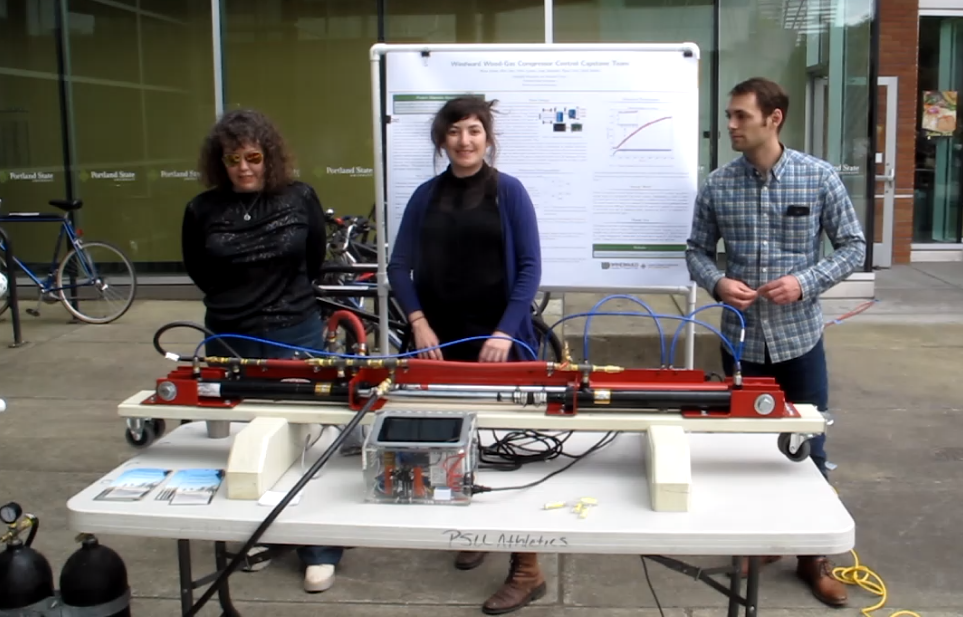Summer Update 2018I'm pleased to report that the Capstone project has been successfully completed!
To review, last winter we constructed a small, portable version of the multi-stage wood gas compressor so that a team of senior engineering students at PSU would use it to create an interactive control system that was capable of independent operation. The students named the miniature version of the biomass compressor the "Little Beast." Previously, an operator had to trigger the different compression stages so that when Stage One reached its design pressure, Stage Two would kick in, draw compressed gas from Stage One, and boost it to the next level. The challenge lay in that by drawing compressed gas off of Stage One, Stage Two would lower the pressure in Stage One. In order for Stage Two to work property, Stage One would need to restore the design pressure to the gas being fed into Stage Two. The result is that as Stage Two comes up to its design pressure, there's a continuous dance between the two stages as Stage One works to maintain it's design pressure as Stage Two draws on it. What the Capstone crew worked out was an intelligent control system that could automatically switch between the two stages, maintaining the pressure in Stage One while building pressure in Stage Two. In effect, the new control system allows the compressor to be turned on, and then left to run itself without further operator involvement until both stages reach their design pressure. Then, when that's accomplished, the controller shuts the compression cycle down. This autonomous control capacity is crucial to B2M. It's one thing for a large installation to require significant amounts of operator involvement since a lot of product is being produced. But a village scale system can't afford to tie up an operator's time doing things that can be done by an intelligent control system. There are control systems on the industrial market that can do the job, but the goal here was to replicate that capacity using inexpensive components that can be configured by the user to suit their particular application. Woody biomass comes in a wide range of forms, from wood chips to rice husks, from switch grass to sugar cane residue, and all of them require the ability to tweak the processing system accordingly. In addition, it's important to be able to adjust the system to produce the variety of energy products the local community needs. Accordingly, a village scale system has to be readily adjustable so that it can deal with a variety of available inputs and create a range of useful outputs. This modest beginning represents an important step forward in B2M's ability to integrate that capacity into our system. For those interested in a look "under the hood," here's a link to the code that was developed to control the "Little Beast" compressor. Thank you again for your faith in this project, and your willingness to support the work. We couldn't do this without you. If you're not already a True Friend of this work, but would like to be, you can sign up here. ~~ Walt |
